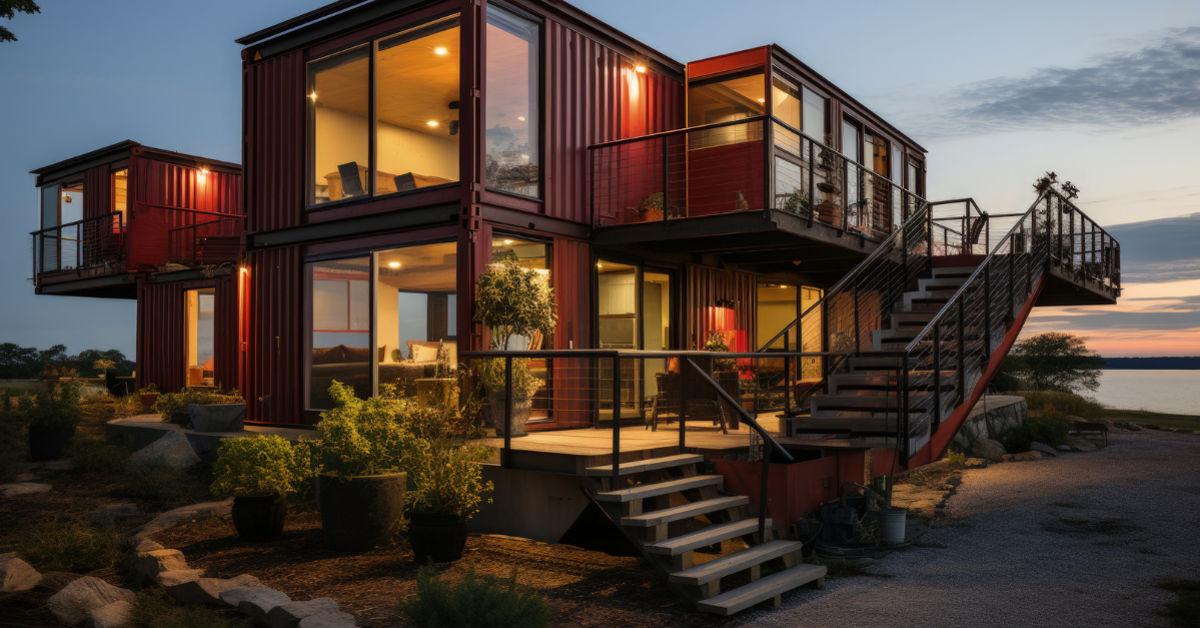The way we live is evolving, and housing is no exception. A pod house is no longer just a trend—it’s a lifestyle shift. With rising urbanization, sustainability concerns, and skyrocketing real estate prices, more people are turning to modular, prefabricated homes for a smarter, more flexible way to live. Whether you’re a minimalist, an eco-conscious buyer, or simply looking for a budget-friendly yet beautiful living space, the pod house offers a compelling solution.
This article delves deep into the pod house concept—from its design and functionality to its affordability and appeal. You’ll discover why these modular units are reshaping the housing market and what makes them a smart choice for modern living.
What is a Pod House?
A pod house is a prefabricated modular housing unit that is manufactured off-site and assembled on location. Unlike traditional construction methods, which are time-consuming and labor-intensive, these units are designed for quick, efficient assembly with minimal disruption to the environment.
Key Characteristics:
- Prefabricated: Built in a factory-controlled environment
- Modular: Can be expanded or reduced as needed
- Minimalist: Clean, simple design aesthetics
- Efficient: Lower cost and quicker construction
- Sustainable: Often uses eco-friendly materials and systems
History and Evolution of Pod Homes
Pod houses have their roots in the mid-20th century when architects and engineers began experimenting with modular construction. Initially used for temporary housing or disaster relief, the concept has evolved dramatically over the past two decades.
Today, modern pod homes serve as permanent residences, holiday homes, workspaces, and even commercial studios. With advancements in materials, design, and technology, they have become synonymous with contemporary, sustainable living.
Why Are Pod Houses Gaining Popularity?
Several driving forces contribute to the rising interest in pod-style living:
1. Affordability
Traditional housing prices continue to climb, putting homeownership out of reach for many. Pod homes, however, offer a lower-cost alternative without sacrificing comfort or quality.
2. Faster Construction
Since most of the work is done in a factory, on-site assembly takes days or weeks instead of months. This appeals to homeowners and developers alike.
3. Sustainability
Pod houses often incorporate green materials and energy-efficient systems. Many are designed with solar panels, rainwater harvesting systems, and high-efficiency insulation.
4. Flexibility
Pods can be easily customized, expanded, or relocated. This makes them ideal for growing families, digital nomads, or businesses in need of agile spaces.
5. Minimalist Aesthetics
Simplicity is beautiful. The pod house embraces a minimalist style that blends effortlessly with nature and urban environments alike.
Pod House Designs and Layouts
Pod homes come in various shapes, sizes, and configurations. From compact studio layouts to multi-pod family units, there’s a design for nearly every purpose.
Common Layouts:
- Studio Pod: Ideal for single occupants or as guesthouses
- One-Bedroom Pods: Perfect for couples or Airbnb-style rentals
- Multi-Pod Structures: Connect several units to form a larger home
- Loft Pods: Utilize vertical space for sleeping or storage
- Commercial Pods: For use as office space, studios, or pop-up shops
Modern pod houses often include open-plan kitchens, built-in furniture, smart lighting, and modular storage options.
Uses Beyond Housing
Though primarily residential, pod houses serve many functions in today’s fast-changing world.
Alternative Applications:
- Home Offices: Especially relevant post-pandemic
- Garden Studios: Private spaces for work or hobbies
- Vacation Rentals: Stylish, compact getaways for travelers
- Student Housing: Affordable and efficient
- Disaster Relief Units: Quick to deploy and set up
- Retail or Event Pods: Temporary, relocatable commercial spaces
These versatile applications make pod houses an appealing option for entrepreneurs, families, and governments alike.
Materials and Construction
Commonly Used Materials:
- Engineered wood
- Recycled steel
- Composite panels
- Fiberglass
- Sustainable insulation
Manufacturers focus on durability and environmental responsibility. Many pod homes are built to withstand harsh weather, including snow, wind, and extreme temperatures.
Energy-Efficient Features:
- Double or triple-glazed windows
- LED lighting
- Solar panel integration
- Rainwater collection systems
- Smart HVAC and insulation
These features not only reduce operational costs but also lower the carbon footprint of the home.
Pros and Cons of Pod Houses
Every housing option has its strengths and limitations. Here’s a balanced view of what pod houses offer.
| Pros | Cons |
| Faster construction | Limited interior space |
| Lower cost | Zoning and permit restrictions |
| Eco-friendly and efficient | Fewer customization options |
| Easily expandable | Financing may be challenging |
| Portable and flexible | Might lack traditional appeal |
Understanding both sides helps you make an informed decision.
Real-Life Examples
1. The UK’s Urban Pod Housing
In cities like Bristol and London, small urban pod homes are being used to combat housing shortages. Compact yet stylish, they provide a livable solution for young professionals.
2. Scandinavian Eco Pods
In Sweden and Norway, eco-friendly pod homes are placed in forests and near lakes. Built from locally-sourced wood and solar-powered, they combine sustainability with luxury.
3. Australia’s Backyard Pods
A growing number of Australians are adding pod units to their backyards for family members or rental income. These secondary dwellings are affordable and increase property value.
Pod Houses vs Traditional Homes
| Feature | Pod House | Traditional Home |
| Build Time | Weeks | Several months to years |
| Cost | Lower | Higher |
| Environmental Impact | Low | Moderate to high |
| Customization | Moderate | High |
| Portability | High | Fixed |
| Maintenance | Easier | More complex |
While pod homes don’t replace all functions of a traditional home, they offer a smart alternative for specific needs and modern lifestyles.
Cost Breakdown
The price of a pod house varies depending on design, size, materials, and location. Here’s a general idea:
| Type | Average Cost Range (USD) |
| Studio Pod (150–250 sq ft) | $20,000 – $40,000 |
| One-Bedroom Pod (300–500 sq ft) | $45,000 – $80,000 |
| Multi-Pod Modular Home | $90,000 – $200,000+ |
| Commercial Pods | $30,000 – $100,000 |
Additional expenses may include land purchase, permits, and utility connections.
Maintenance and Durability
Pod houses are built with longevity in mind. With fewer joints and exposed components than traditional homes, maintenance is generally easier and less costly.
Maintenance Tips:
- Regularly check insulation and seals
- Keep solar panels clean and functional
- Inspect the foundation (if on stilts or piers)
- Clean air filters and HVAC systems
- Paint or treat exterior materials every few years
Durability depends largely on the build quality and materials used. Many pod homes last 30+ years with proper care.
Planning, Permits, and Legal Considerations
Before installing a pod house, consult your local authorities to understand zoning laws and permit requirements. Rules vary by country and even by neighborhood.
Factors to Consider:
- Is the land zoned for residential use?
- Are utility hookups available?
- Do local building codes support modular units?
- Is there a limit to the size or height?
- What are the property tax implications?
Hiring a local architect or planning consultant can help navigate these challenges.
Future Trends in Pod House Living
Pod homes are no longer niche—they’re becoming mainstream. Here’s what the future holds:
- Smart Tech Integration: Home automation systems, energy monitoring, and IoT features
- Urban Pod Villages: Communities designed entirely with modular housing
- AI-Optimized Layouts: Custom layouts based on occupant behavior
- Bio-based Materials: Hempcrete, mycelium, and carbon-negative materials
- Self-Sustaining Pods: Complete off-grid capabilities with built-in renewable systems
With these innovations, pod housing is poised to revolutionize the real estate landscape.
Conclusion
Whether you’re drawn to minimalism, looking for a cost-effective home, or simply want a flexible space, the pod house represents a practical and stylish option. It’s more than just a modern trend—it’s a solution to many of today’s housing challenges.
From reducing your carbon footprint to saving money on construction, pod living offers tangible benefits. As technology and design continue to evolve, the appeal of modular homes will only grow.
Frequently Asked Questions (FAQ)
What is a pod house used for?
Pod houses are used for residential living, vacation rentals, offices, studios, and even retail spaces. Their modular nature makes them versatile for many applications.
Are pod houses cheaper than traditional homes?
Yes, pod homes are generally more affordable due to lower construction and labor costs, and faster build times.
Do I need a permit to install a pod house?
In most areas, yes. Always check with local authorities about zoning laws, permits, and utility regulations before installation.
Can I live in a pod house full-time?
Absolutely. Many people use pod homes as permanent residences with full utilities and amenities.
Are pod homes eco-friendly?
Most pod houses are designed with sustainability in mind. They often include energy-efficient systems, recycled materials, and minimal environmental impact.


